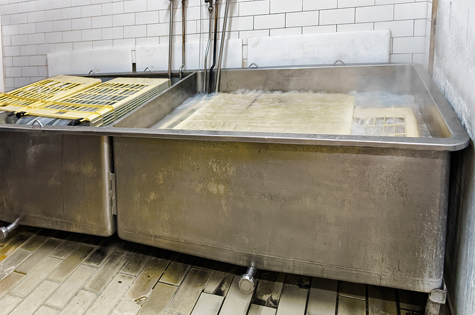Food Safety Training Key to Improving Outcomes for Sanitation and Hygiene
By Allie Gallant
All widely-accepted food safety standards include provisions for sanitation. And being certified to one of those standards is a requirement of doing business, especially with major international retailers. So caring about sanitation is not only part of the food industry’s responsibility to provide safe food: it’s also profitable for suppliers.
Sanitation and hygiene are often lumped together. But in fact, sanitation is a part of overall hygiene practices. Other parts include pest management, raw materials management, process controls, good manufacturing practices and employee hygiene.

Accuracy and Cost-Efficiency Drive the Evolution of Sanitation
Developments in the world of sanitation are being driven by two main features:
1. Automation. This includes technology that can measure, collect and interpret data on sanitation controls. Automation can provide greater consistency and tighter operational limits, reduce labour costs, and provide a speedier response when problems arise. Examples of manual processes that have largely gone automatic include clean in place (CIP) systems and antimicrobial systems for produce and protein.
2. Chemistry. Tweaking product formulations and reducing the number of processing steps can reduce risk. Newer cleaning agents reduce hot water and energy consumption to further reduce cost, and many are EPA-registered.
The Missing Link
Perhaps the most important issue in all sanitation and hygiene programs is the need to ensure they are executed successfully. Ensuring employees are trained and consistent is still a challenge.
Companies that specialize in sanitation, like Ecolab, usually offer some form of training to support proper execution. Cutting-edge programs tend to focus on defined training and re-training schedules, routine observations of employee procedures, ensuring employees have what they need to do their job, and signage and other visual cues to keep sanitation top of mind. Building a food safety culture is another key feature of modern training, ensuring employee behaviour remains consistent, even in the absence of supervision.
Sanitation and hygiene to prevent cross-contamination have evolved greatly in recent years with the implementation of newer technology and products. But a sanitary food processing environment still relies heavily on employees. Selecting a HACCP-based food safety standard to ensure your sanitation program will meet customer requirements is vitally important, but companies who invest in proper training and resources for their employees have improved outcomes as they make safe, hygienic food a reality.
About the Author
Allie Gallant is a regular freelance writer and blogger with Global Food Safety Resource and she is also one of our most valuable and recognizable contributors.




